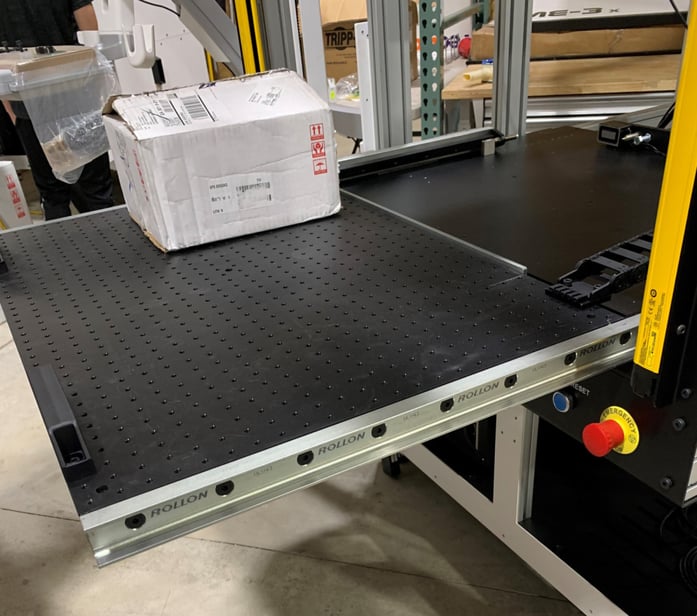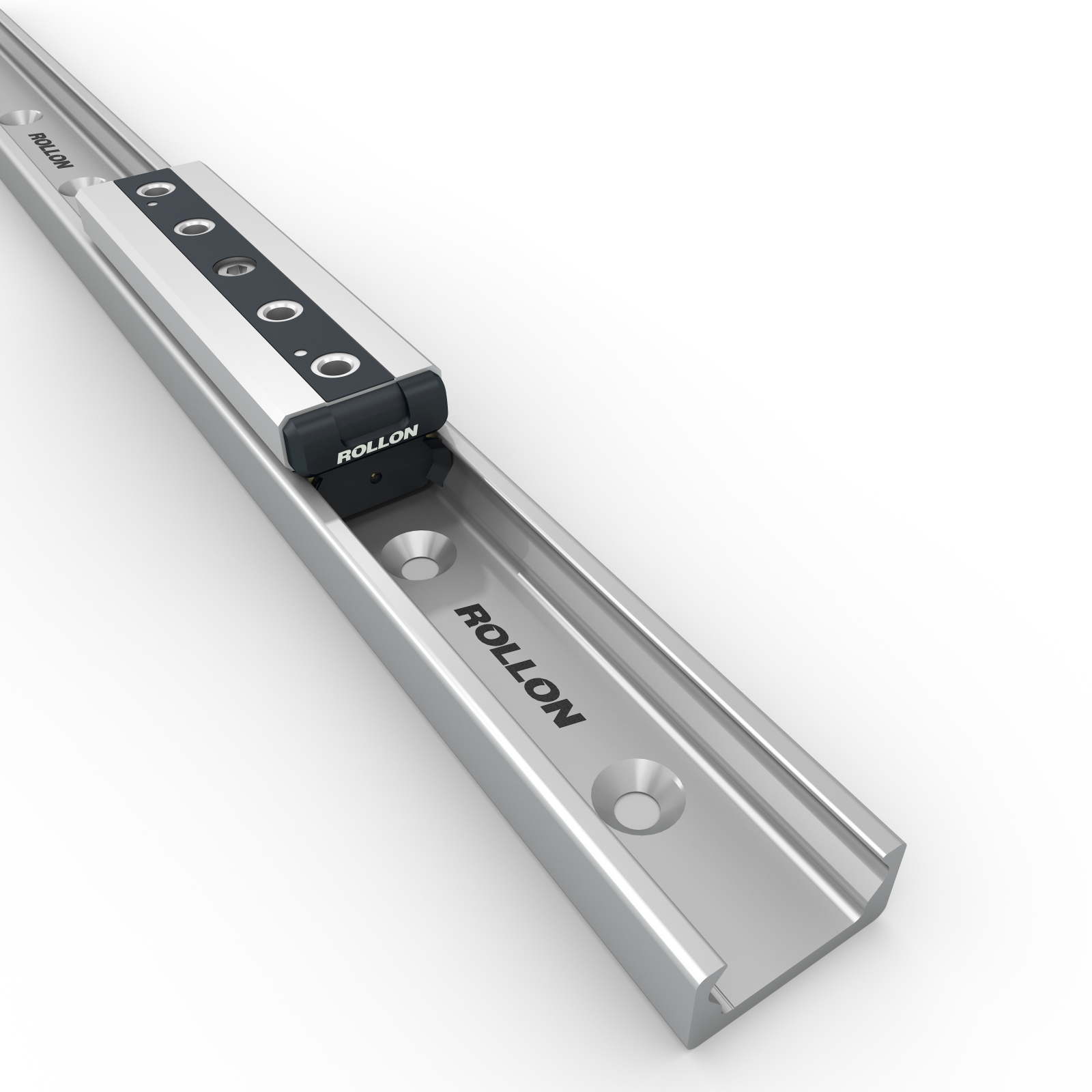Lasers have become an invaluable way to mark and identify workpieces across a wide range of industries. The dental industry is no exception. Laser technology applies barcodes and other identifiers to casts used to make impressions of a patient’s teeth in order to prescribe implants, alignment treatments or prosthetics for crowns, bridges and dentures. Denture wearers can even order their prosthetics via their smartphone by scanning QR codes on denture molds displayed inside cabinet drawers.
Recently, a machine shop that builds enclosures for laser marking systems needed a pair of linear guides to support a sliding shelf for an engraving cell that marks dental molds. Users open the enclosure door and slide the drawer out to add or remove the dental molds. The shop required a linear guide that, when retracted, could accurately position the casts inside the enclosure for placement under the laser for safe etchings and markings. The enclosure builder previously used mono-style guides.
In addition, the new guide had to be strong enough to handle a 200-pound load and provide 690 millimeters of stroke when fully extended with minimal deflection. Reliability and lifetime were also important criteria, so the enclosure builder wanted a robust guide.

Compact Rail Makes a Good Impression
With the help of a Rollon technical sales specialist, the customer chose our Compact Rail in the 43-millimeter size. Compact Rail offers a maximum radial load capacity of 15,000 Newtons, and the chosen unit — installed on each side of the drawer — successfully supports the weight of the drawer and the dental molds. Thanks to its steel linear rails with induction hardened raceways and high-precision radial ball-bearing sliders, also made of hardened steel, Compact Rail delivers the required rigidity to minimize deflections during extension, and it is operating reliably. Additional features include:
- An ability to compensate for misalignment on mounting surfaces.
- Quiet operation.
- Low maintenance.
- Long lifetime.
- Adjustable preloading.
Performance and Service That Hit the Mark
We worked with the enclosure manufacturer every step of the way and helped recommend two standard-size Compact Rail guides based on the device’s footprint and other requirements. We also helped set the preloads and insert the sliders during installation. After Compact Rail was installed, the drawers performed dependably. In fact, the manufacturer is considering Compact Rail for other equipment. We’re keeping plenty of materials in stock to make sure we’ll meet the customer’s lead time requirements before the next build. Thanks to Compact Rail’s rugged features, combined with our attentive service, the enclosure manufacturer can always be certain its drawers will provide on-the-mark positioning.
For more information, download the case study and visit our product page.

